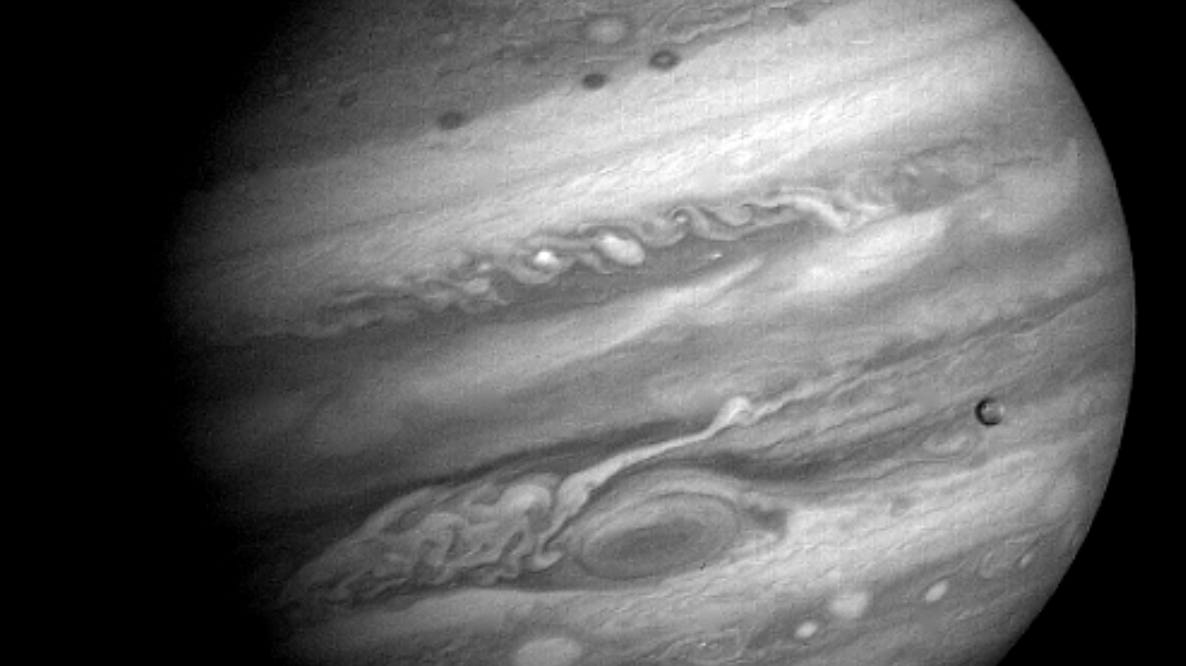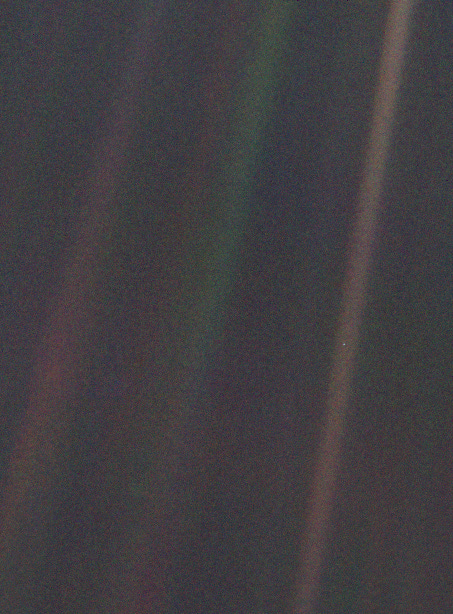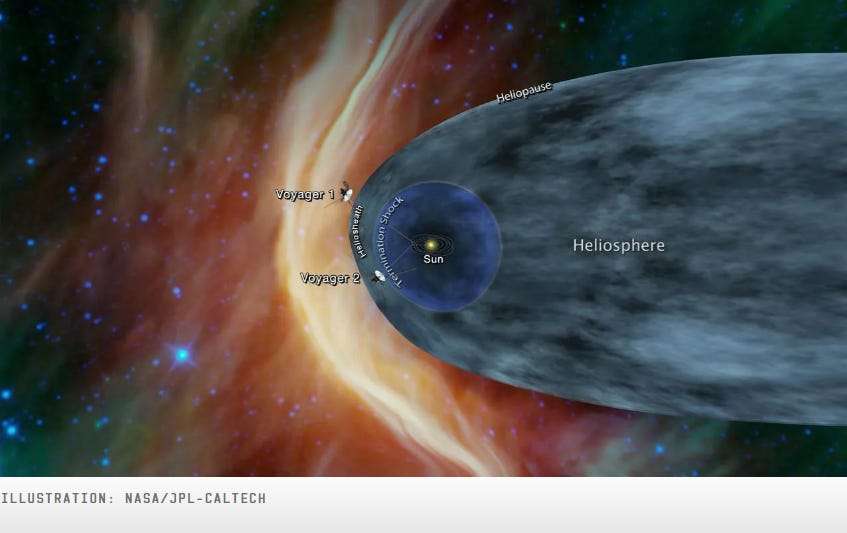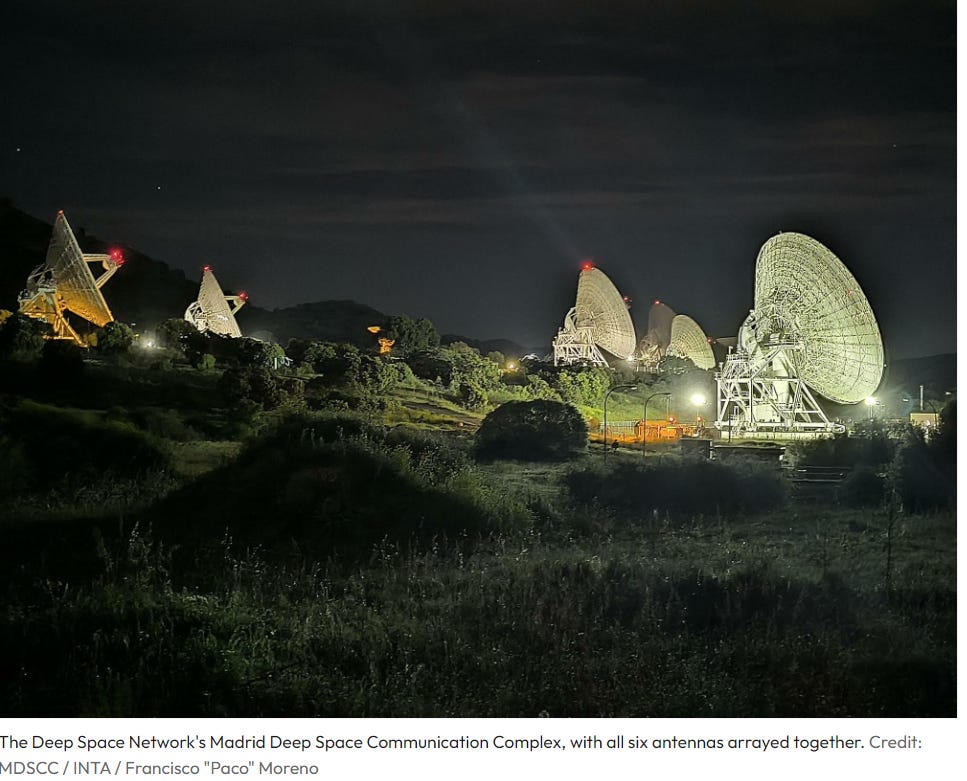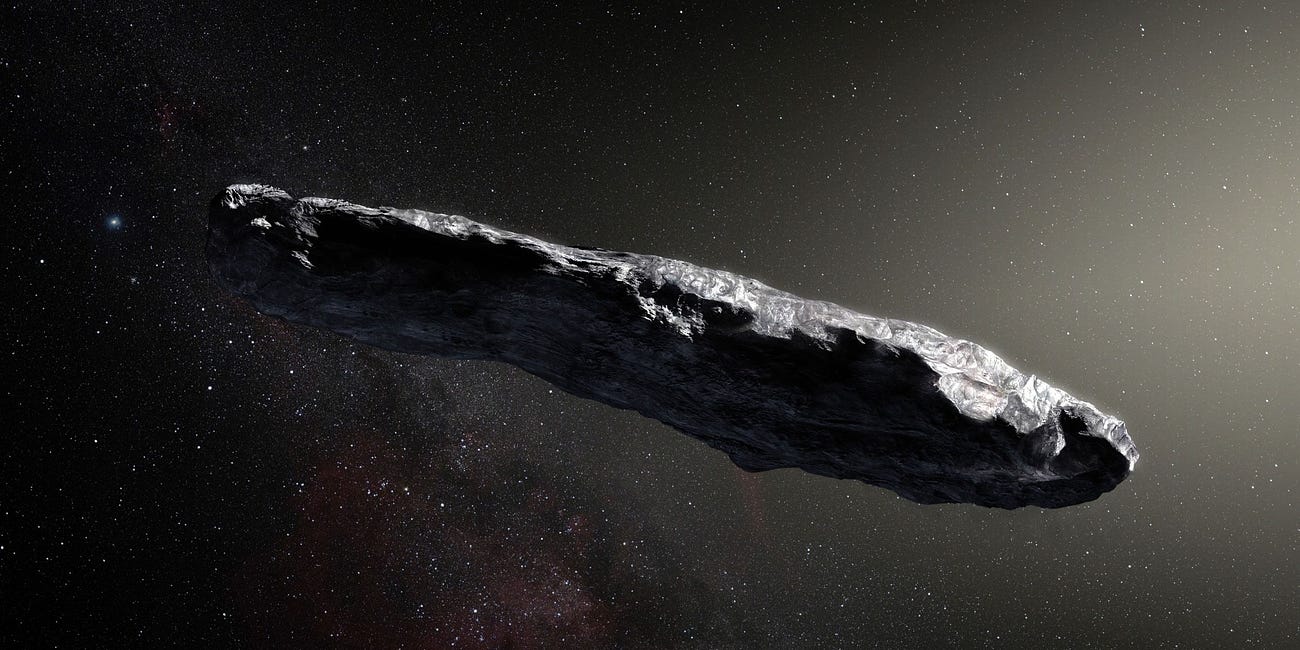It is, perhaps, one of the loneliest machines in existence. Hurdling through the cosmos, some 15 billion miles away from home, Voyager 1 is older than many of the people reading this. It launched before cellphones came into common use, and even makes the Windows Operating System look young.
In December 2023, NASA reported that Voyager had stopped communicating properly with mission control. The problem began on November 14 when messages sent by the probe indicated that it might be stuck in some kind of loop, perhaps heralding the end of the mission. The probe’s vast distance from Earth means that communication takes more than 22 hours to travel in just one direction. As such, the Voyager team can only solve the issue with one attempt at a time, essentially once every other day.
What is Voyager 1?
Voyager 1 is a relatively small space probe—it weighs just 1,592 pounds (721.9 kg). Launched on September 5, 1977, the probe left the Earth’s atmosphere via a Titan IIIE-Centaur. Its initial mission was to explore Saturn and Jupiter, which it did between March of 1979 and November of 1980, but its extraordinary engineering and endurance allowed it to continue onward, far beyond what anyone had imagined or hoped. Now, it is forging ahead to become the first manmade interstellar explorer. Engineers armed Voyager 1 with an array of scientific instruments to ensure its mission’s success. By employing these tools, Voyager 1 has taken some of the most exquisite photos in history.
Here is NASA’s description of this image (click the link to see the animated version):
This is the original Voyager "Blue Movie" (so named because it was built from Blue filter images). It records the approach of Voyager 1 during a period of over 60 Jupiter days. Notice the difference in speed and direction of the various zones of the atmosphere. The interaction of the atmospheric clouds and storms shows how dynamic the Jovian atmosphere is. As Voyager 1 approached Jupiter in 1979, it took images of the planet at regular intervals. This sequence is made from 66 images taken once every Jupiter rotation period (about 10 hours). This time-lapse movie uses images taken every time Jupiter longitude 68W passed under the spacecraft. These images were acquired in the Blue filter from Jan. 6 to Feb. 3 1979. The spacecraft flew from 58 million kilometers (~36 million miles) to 31 million kilometers (19.26 million miles) from Jupiter during that time. This time-lapse movie was produced at JPL by the Image Processing Laboratory in 1979.
Voyager 1 ultimately traveled within 174,000 miles (280,000 km) of the planet.
Late in 1979, Voyager 1 approached Saturn during which time it discovered five new moons. During Voyager’s pass, mission control needed to tweak the probe’s trajectory to avoid plummeting into Saturn’s moon, Titan. Instead of crashing, Voyager 1 scooted by at a distance of just 2,500 miles (4,000 km), capturing remarkable photos and scientific data. This led to finding that Titan appears to be the only other planetary body in the solar system besides Earth where liquid water might exist on the surface. On Feb. 14, 1990, at 40 astronomical units (AU) from the sun, Voyager 1 turned its cameras backward to snap an image of the solar system, resulting in the iconic “pale blue dot” photo (Earth is the tiny dot toward the middle right).
The Error
**Much of this section comes from NASA’s engineering blog, except as otherwise cited.
Problems began in November 2023 when Voyager’s messages to mission control became garbled and nonsensical. Engineers suspected a problem with the onboard flight data subsystem (FDS). The FDS manages data collection, formatting, and storage. Upon properly formatting collected data, the FDS hands it off to the telemetry modulation unit, which sends it back to Earth. To grapple with the situation, the Voyager team commanded a “poke,” basically a troubleshooting protocol, urging the probe to run various sequences to see if the engineers could discern the problem from whatever response came back.
Upon receiving an answer, the team noted that one portion of the data differed from all the other, unreadable data they had been receiving since November. This new data did not come in the format that it normally would before the problem arose, but it provided a lead by which the engineers could explore solutions. First, they needed to decode this new feed. An engineer with the agency’s Deep Space Network (DSN) did exactly that. He learned that this unusual stream contained a full readout of Voyager 1’s FDS memory.
With this information, the Voyager team compared it to data streams that arrived prior to the issue (before November) to determine what discrepancies led to the malfunction. They learned that a single chip failed, perhaps because of a cosmic ray exposure or simply due to old age. Linda Spilker, project scientist for NASA's two Voyager spacecraft at JPL, explained:
What they have to do is relocate that code into a different portion of the memory, and then make sure that anything that uses those codes, those subroutines, know to go to the new location of memory, for access and to run it.
While the malfunction only affected 3% of the system’s total memory, engineers nonetheless cannot relocate it all to any one place. There is just not enough available space. Instead, they need to break it up, then modify each section of it to work in tandem with the code in whatever place they relocate it. In addition, they need to reroute all the system processes to ensure that each accesses the new location of the requisite memory needed to run those processes. All of this has and will be done via paper records since Voyager is so old that its original specs and architecture were never digitized. The problem remains not fully solved, but NASA scientists seem confident they will figure it out, allowing Voyager to venture ever farther into the darkness of interstellar space.
Lastly, a quick note on how scientists communicate with an ancient computer onboard a spacecraft flying more than 15 billion miles away. The DSN is a network of radio antennae and other hardware, radio engineers, and interstellar communication scientists. The largest array of antennae, located in Madrid, consists of six huge antenna dishes, all pointed in the direction of the Voyager 1 probe to send and receive messages. For now scientists generally can reach the probe with just 5 of these units, but as Voyager 1 careens ever deeper into interstellar space, all 6 will eventually be needed just to hear the increasingly faint transmissions, let alone decipher them. The data comes in a variety of formats, depending upon which onboard instrument took the measurement. To review Voyager 1’s data in detail, click here or here.
Voyager 1 is not DSN’s sole concern. The DSN has another dish in Canberra, Australia. That massive radio antenna primarily communicates with Voyager 2, another probe operating similarly to Voyager 1, but not yet as far away and traveling in a different direction. Canberra’s antenna is 230 feet wide (70 meters), as tall as a 20-story office building, and is 48 years old. Because of the position of Voyager 1, this antenna cannot communicate with it.
A third location of the DSN is near Barstow, California. Known as the Goldstone Deep Space Communications Complex, all efforts of the DSN across the world are coordinated here. Amy Smith, deputy project manager for the DSN at JPL, notes that the facility is spearheading development of laser, or optical, communications, which could enable more data to be packed into transmissions. She says that “Laser communications could transform how NASA communicates with faraway space missions.”
While DSN’s various arrays operate on specific missions, the DSN is critical to all NASA operations because it is the heart of development for interstellar communication. Without this division, projects like the Mars Rover, sample collection from the asteroid Bennu, or either of the Voyager missions would have been impossible. Operating since 1963, DSN today supports 40 ongoing missions, with more than 30 more in development. Aside from mission support, DSN also contributes to the field of radio science, which of course has numerous applications here on Earth.
NASA is, perhaps, one of the most important institutions ever organized for the progression of modern technology and science. Its funding and support is perhaps more critical than any other institution upon which the US government is wont to spend money. Space exploration represents just a small portion of the many things NASA scientists study and develop. I encourage you to explore all of them. But, to provide one more localized example, the EALS Global Foundation works with NASA technologies and public platforms to bolster its efforts at providing early warnings and data collection on natural disasters in Nepal.
If you want to follow Voyager 1’s mission in real-time, click here and bookmark the page.




